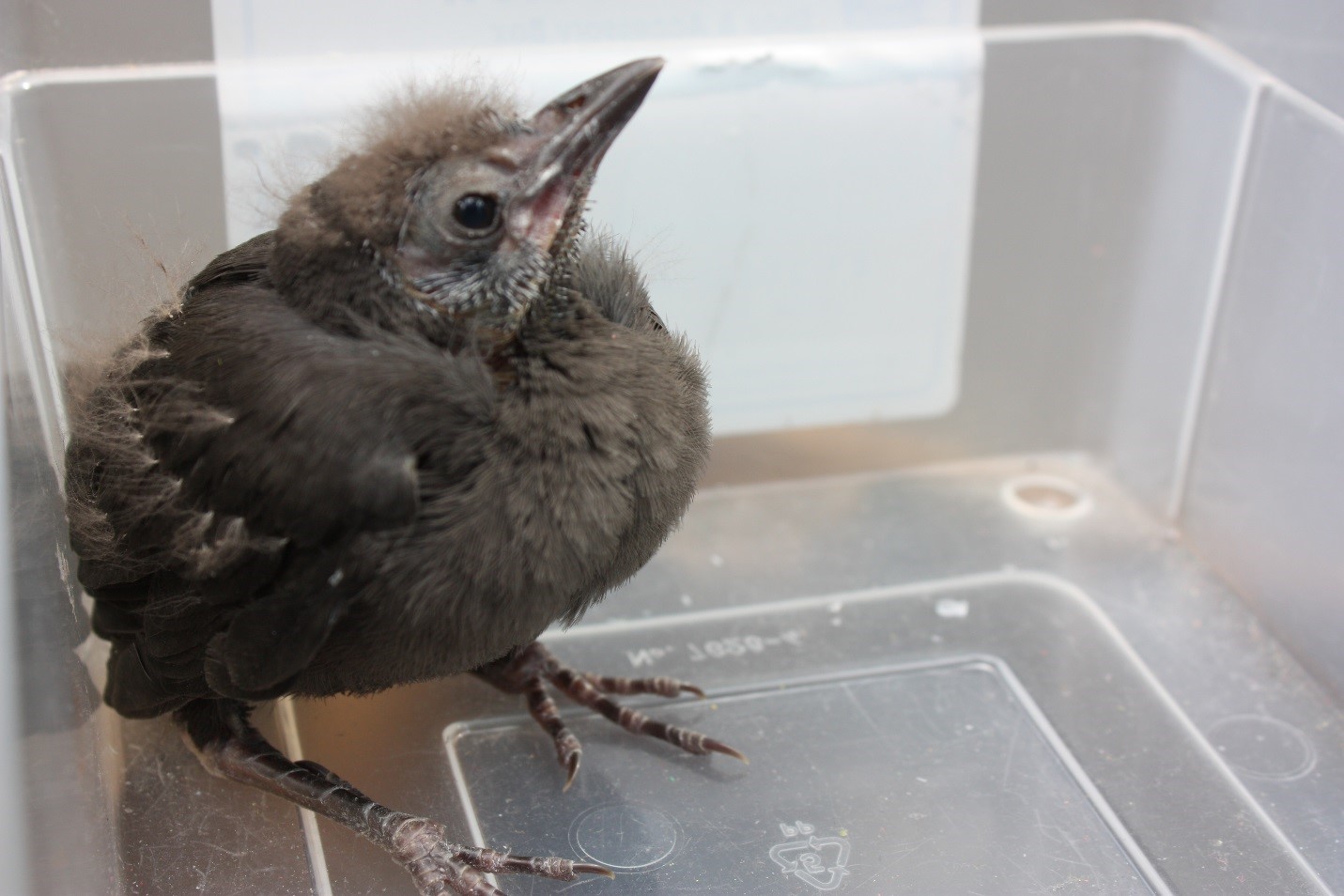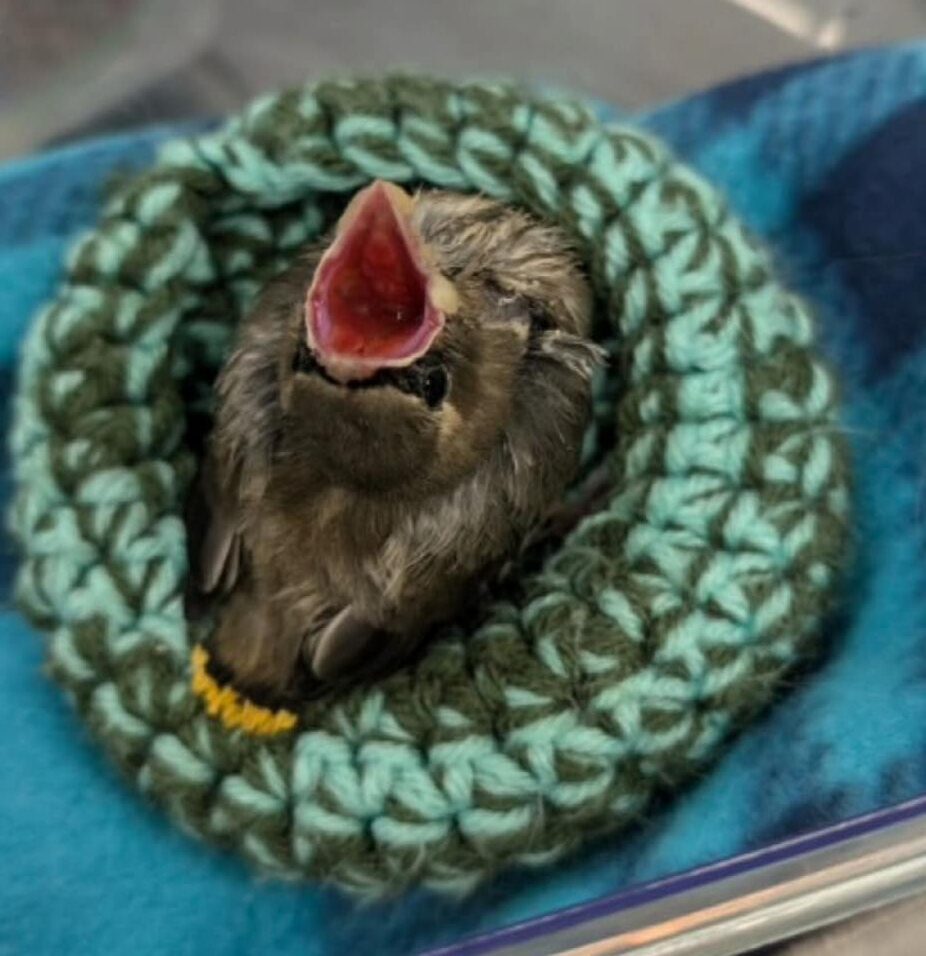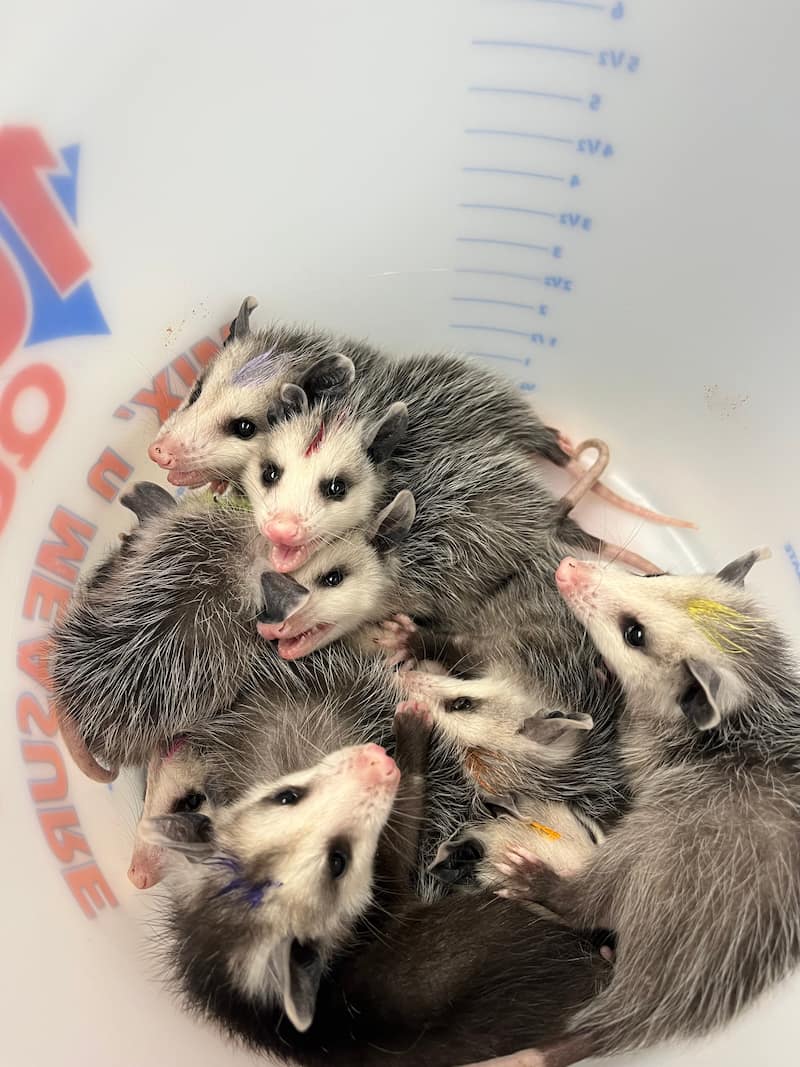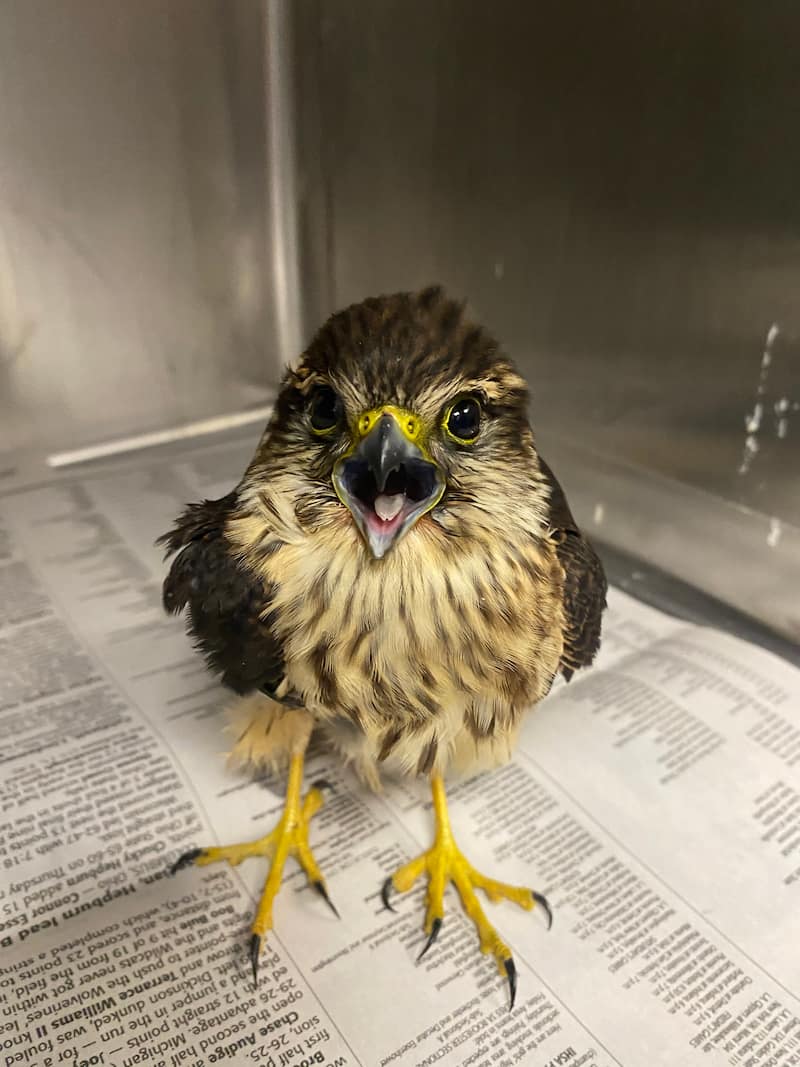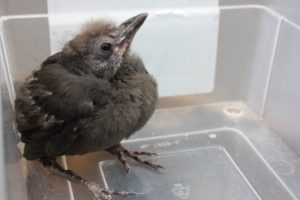
Guest post by second year veterinary student, Megan Stuart.
On a hot summer’s day in late May, a Common Grackle was found on a driveway in Springfield, Illinois and brought to the Wildlife Clinic as a healthy fledgling. Common Grackles are large blackbirds that have adapted well to city and surburban habitats, and are resourceful omnivores: in agricultural fields they’ll follow plows to pick out insects and mice, near marshes they will pick leeches off of turtles and wade into water to catch small fish, raid smaller birds’ nests to eat eggs and live birds, and can even use a special beak adaptation to saw into acorns and eat the insides! Adult Common Grackle males have brightly iridescent feathers of blue, purple, and bronze, but young Common Grackles do not show any sign of sexual dimorphism (distinct difference in size or appearance between the sexes of an animal in addition to difference between the sexual organs themselves), so volunteers are unsure of this fledgling’s sex.
The small fledgling received nestling care as often as possible for the first few days in the clinic to supports his growing body and nutritional needs – in some cases, volunteers will check on these young ones nearly 10 times per day! Once he had grown some more, he received little balls of food 5 times a day, and was promoted to mealworms once he showed signs of eating on his own. Since he was caged alone, the fledgling was given a mirror to encourage self-recognition, which he sat by all day and was even spotted playing with his reflection!
Towards the end of the Grackle’s stay, a fledgling American Robin came into the Wildlife Medical Clinic, and was placed in the cage so the grackle could have a feathered companion. Soon after, he was consistently eating mealworms on his own, and so the fledgling was transferred to a local, licensed wildlife rehabilitator to grow a little more before being released. All of the volunteers enjoyed working with adorable fledgling, who never turned down the opportunity to eat! He went from 48.8 grams to 89 grams while in the Wildlife Medical Clinic at the University of Illinois.

